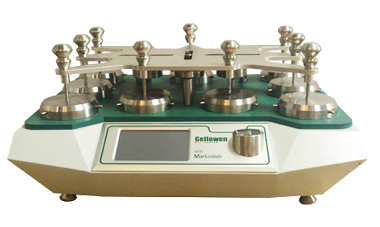
NewsInformation Center
What is the pilling resistance of fabric, and how to test it?
2023/11/16
The anti-pilling property of fabrics refers to the ability of the surface fibers of fabrics not to be prone to producing hairballs or pilling during use. Hairball is due to the fabric surface fibers by friction, friction, brushing and other effects and loose or out of the original position and the formation of small clumps.
Pilling resistance is an important indicator of fabric quality and durability. Fabrics with good resistance to pilling will maintain a clean and smooth appearance and minimize wear and damage caused by use.
The pilling resistance of fabrics is affected by a variety of factors, including the fiber material, weaving method, textile process, and fabric surface treatment. Some fabrics can improve their anti-pilling performance with special treatments, such as pilling prevention process, anti-pilling treatment, anti-static treatment, and so on.
Pilling resistance can usually be assessed through fabric testing. A common test method is to use the Martindale Fabric Abrasion Tester to simulate actual abrasion in use, and then observe and count the number of hairballs generated to assess the fabric's pilling resistance.


The following are the general steps for testing fabrics for pilling resistance:
Sample Preparation:
A sample of a specific size is cut from the fabric to be tested. Depending on the specific test requirements, more than one sample may be required.
Testing Instrument:
A Martindale pilling tester is used for testing. The Martindale Pilling Tester typically consists of a circular test stand with multiple test stations. Each test station has a friction head covered with an abrasive material (e.g. Sørensen abrasive fabric).
Conditioning:
The samples are conditioned in a controlled environment to ensure uniform humidity and temperature. This step ensures consistent and reproducible test results.
Test Procedure:
The sample is mounted on the test instrument and a specified number of test cycles are performed. During each cycle, a friction head on the test station moves in a circular motion, rubbing and abrading the sample. The pressure, speed and duration of friction are standardized.
Evaluation:
Upon completion of the specified number of test cycles, the samples are visually evaluated to assess their resistance to pilling. The evaluation typically includes an assessment of the severity of pilling, the appearance of changes in the fabric surface, and other relevant observations. Numerical or descriptive ratings may be assigned to the fabric's performance using a rating system or standardized reference photographs.
Reporting:
Reporting of test results, including fabric type, test conditions, number of test cycles performed, and observed anti-pilling properties and fabric surface changes. This information helps fabric manufacturers, designers, and consumers make informed decisions about the suitability of a fabric for a particular application.
It is important to note that Martindale pilling testers are commonly used to evaluate the pilling resistance of fabrics, but other test methods and instruments may be used for pilling testing where specific industry requirements or preferences dictate. In order to fully assess the quality and durability of a fabric, a combination of other test methods and performance indicators is recommended.
Previous: hat is the difference between ASTM e2768 and CAN/ULC S102?
N e x t : What is the ISO standard for color fastness to rubbing?



